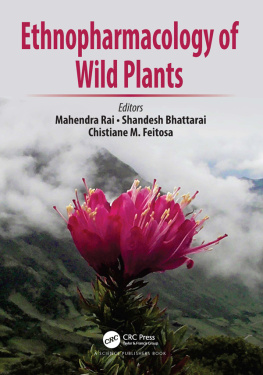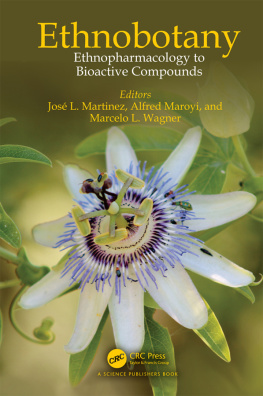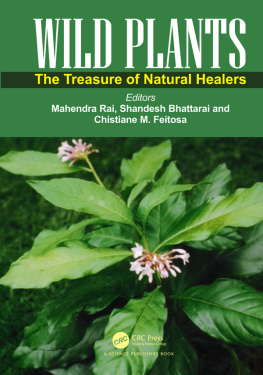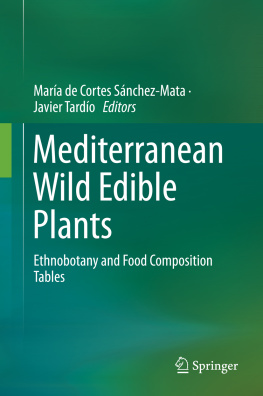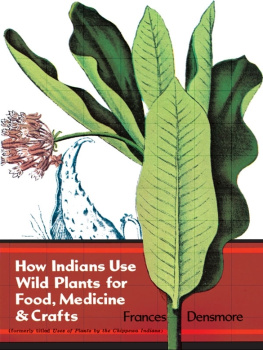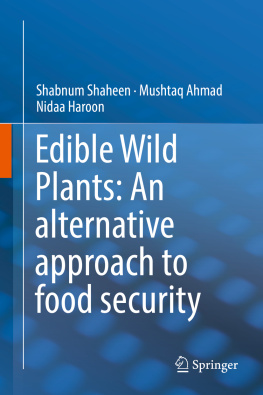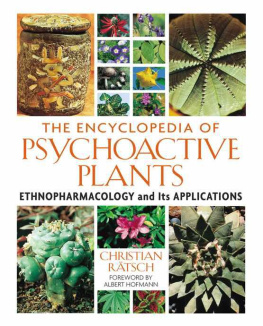Chapter 1
An Introduction to the Ethnopharmacology of Wild Plants
Shandesh Bhattarai,
Faculty of Science, Nepal Academy of Science and Technology, Khumaltar, Lalitpur.
Department of Chemistry, Federal University of Piaui, Petronio Portela Campus, Brazil.
Sant Gadge Baba Amravati University, Amravati, Maharashtra, India.
Introduction
Natural sources including plants form the basis of modern medicine and contribute largely to the production of commercial drugs. Every tribal society has a traditional medicine system. The human use of plants as medicines may be traced back at least 60,000 years, reflecting their ability to produce secondary metabolites with a broad range of pharmacological properties (Fabricant and Farnsworth 2001, Shi et al. 2010, Buyel 2018). About 25% of drugs prescribed worldwide are derived from plants (Thillaivanan and Samraj 2014). With an annual global market worth 60 billion dollars, more than 1000 companies are involved in providing medicinal plant products (Newmaster et al. 2013), and an impressive number of modern drugs have been developed from terrestrial plants (Kaur et al. 2011).
The described and accepted number of plant species in the world is about 374,000 including 308,312 vascular plants. Of these, 295,383 are angiosperms (Christenhusz and Byng 2016). The largest vascular plant family is Orchidaceae followed by Asteraceae (Funk et al. 2009, Chase et al. 2015, Shrestha et al. 2018), but there may be several unexplored and unidentified plant species and thus the large parts of the world are still in need of additional botanical expeditions (Christenhusz and Byng 2016, Rai et al. 2021). In recent years, the research interest in wild plants is growing due to the emergence of several diseases like AIDS, cancer, Severe acute respiratory syndrome (SARS), and Coronavirus, etc. Currently, not only the local and traditional knowledge in remote regions but also those among immigrant communities are being studied (Heinrich and Casselman 2018, Yeung et al. 2019).
Around 80% of the people in the world depend on herbal medicinal products (Farnsworth et al. 1985, Ekor 2014), but the demand for herbal medicine is rising in both developed and developing countries (Ganie et al. 2015). About 52,885 plants are believed to be used in traditional medicine, but the exact number of medicinally useful bioactive metabolites in these plants is still unknown (Schippmann et al. 2002, Gewali 2008). Increasingly, medicinal species that exist in natural regions have received scientific and commercial attention, but we still know little about the treasure trove living among our wild places (Roberson 2008). Unfortunately, out of 52,885 plant species, about 15,000 are threatened due to habitat fragmentation, overexploitation, climate change and illegal trade in medicinal plants (Schippmann et al. 2006). According to the Royal Botanic Gardens at Kew, the UK, one in five species of plants in the world is threatened with the risk of extinction (Science Daily 2018, Shah and Bhat 2019). Experts estimate that the Earth is losing at least one potential major drug every two years (Roberson 2008).
About two centuries ago, our medicinal practices were largely dominated by plant-based medicines (Cox and Ballick 1994). The consumption of plant-based medicines in the West has also increased in recent years and many developing nations continued to benefit from the rich knowledge of medicinal plants. For example, Siddha and Ayurveda medicines in India, Kampo Medicine in Japan, Traditional Chinese Medicine and Unani medicine in the Middle East and South Asia, still used by a majority of people, have been in practice for hundreds or even thousands of years (Mosihuzzaman and Choudhary 2008, Thillaivanan and Samraj 2014, Yuan et al. 2016). The herbal products form systems of knowledge and practice that have been transferred over centuries from one generation to another, but such indigenous knowledge is vanishing under the pressures of globalization (Heinrich 2010), including increasing popularity of Western medicine, cultural changes, etc. (Alves and Rosa 2007, Warude 2017).
Attempts are being made to isolate active constituents from natural sources that could be used to treat serious illness. Wild plants have abundant properties for the discovery of novel pharmacologically active molecules, mainly because of the environmental stress to which they are subjected (Eisner 1989, 1991, Mateo 2000, Svarstad 2000, Soejarto et al. 2005, Kaur et al. 2011). In this context, many useful drugs from plants were discovered as a result of scientific follow up of well-known plants used in traditional medicine (Cox and Ballick 1994).
Plants have a long history of use in the treatment of cancer and many medicinal plants have been found effective in experimental and clinical cases of cancers (Sivalokanathan and Ilayara 2005, Madhuri and Pandey 2008, Kaur et al. 2011). Still, cancer remains a major challenge to healthcare systems (Yabroff et al. 2011). Between 2003 and 2015, there was an increase from 6.2 to 8.8 million cancer-related deaths, which are approximately 13% of all deaths worldwide (Bray et al. 2012, Stewart and Wild 2014, WHO 2017). The cancer-related mortality rate is higher in developing countries than in industrialized countries (Sankaranarayanan 2014). Over 60% of currently used anticancer agents are derived from natural sources, including plants, marine organisms and micro-organisms (Kaur et al. 2011).
Plants continue to be important sources of drug discovery, especially with the rising popularity of the genomic approach (Atanasov et al. 2015, Harvey et al. 2015, Singh et al. 2018), and the ability of plants to produce medicines has been expended in the recent years (Buyel 2018). Herbs were the first medicines used by humans due to several pharmacologically active secondary metabolites produced by them (Buyel 2018). Thus, wild plants should be investigated by modern scientific techniques to establish their efficacy and to determine their potential as a source of new drugs.
This chapter introduces the ethnopharmacology of wild medicinal plants by some examples of the discovery of drugs from wild plants. Moreover, the challenges that have been faced by the researchers while conducting ethnopharmacological researches have also been discussed.
Guidelines to Conduct Ethnobotanical/Ethnopharmacological Research
Some selected guidelines to conduct ethnobotanical/ethnopharmacological study of wild plants following (Cox and Ballick 1994, Martin 1995, Taylor and Chaudhary 2003), with some modification are as follows:
(i)Selection of a society
Ethnobotanists choose a society that documents traditional knowledge of wild plants. Cox and Ballick (1994) provided guidelines for choosing a society. First, the society should be located in an area with rich floristic and cultural diversity. Secondly, the society should have remained in the region for many generations; and third, the culture must have a tradition in which healers or knowledgeable persons transmit their traditional knowledge from generation to generation (Taylor and Chaudhary 2003).
(ii)Prior informed consent
Researchers must obtain prior official permission before conducting any research with indigenous people. Fieldworkers should also obtain permission from community members before initiating research activities. Prior informed consent means that the interviewee must be made aware of the research that will be published for common people (Alexiades 1996).
(iii)Field visits, interview, and data collection
It is very important to establish a good relationship with several people in the community before starting the field works. Sometimes, the researchers forget to carry the necessary items that are required in the field. The researchers should take the proper equipment and materials needed for the ethnobotanical study. It is important to remember that the healer with whom the researcher wishes to speak may have a busy life and therefore the researcher should conduct interaction on the time convenient to the interviewee. For the conduction of interviews, it is essential to ask open-ended questions rather than questions that can be replied with one or two words (Martin 1995, Alexiades 1996, Chaudhary 1998, Jain and Mugdal 1999, Cunningham 2001). To approve the identity of the plant described by the interviewee, the interviewer must see the plant. This can be possible by visiting the forest or jungle alongwith the interviewee, where the plant can be identified in its natural environment. Many researchers like to take photographs of the research area if permission is granted. Audio and video recorders are essential for recording indigenous plant names and also a valuable aid during interviews (Alexaides 1996).

